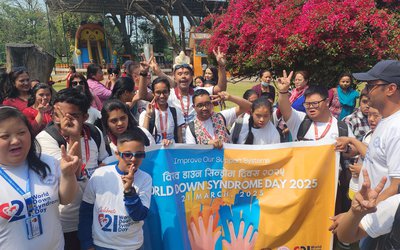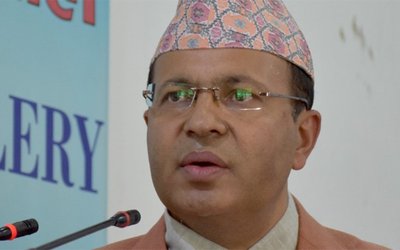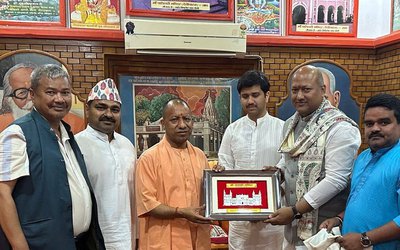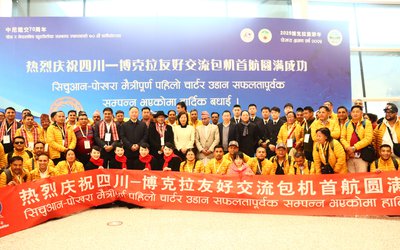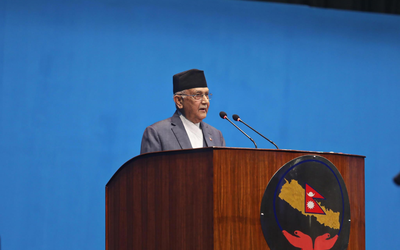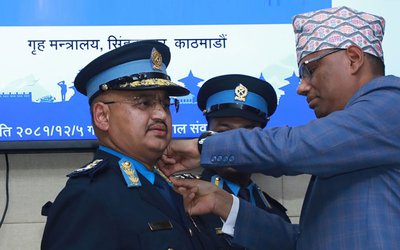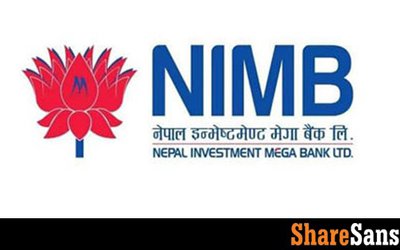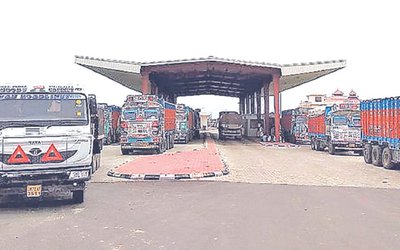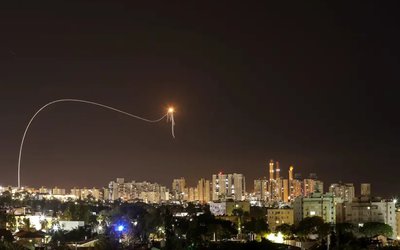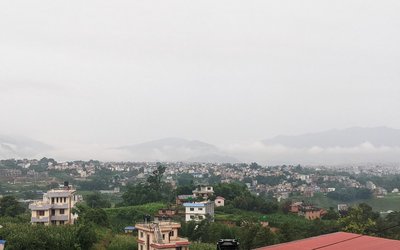
Hema Mushahar, 21, a resident of ward no 5 of Lalbandi Municipality, who closely survived , had never imagined that she can see normalcy in her life so soon with a new shelter built in a higher land with a tube-well and a toilet.
The devastating flood of last August washed out everything that belonged to her family, including the shelter, food, pig and small land. The flood of last August still haunts Hema but the relief and recovery programs launched by Lutheran World Federation (LWF) Nepal has brought drastic changes in her life.
“Yes, the flood had badly hurt us as it washed out our property and shelter. However, the support that came through LWF-Nepal under the flood recovery program has transformed us. The new shelter with toilet, hand pump set, embankment at Betini River and some cash support to rear pig and goat helped us to forget the bad memory of floods,” said Hema Mushahar, from one of the most backward communities of Terai, living at the river bank of Betini.
“This is like a miracle for us as we didn’t expect that our life would come to normal so soon or what I can say is that now is much better than before the flood,” said Hema. “LWF-Nepal and its local partner Samurai completely took care of us from the next day of floods till now.”
Although Hema and her 21 Mushahar community people have been living just a kilometer away from Lalbandi, a major town of east west highway in Sarlahi district, for years their plight went unnoticed. 
Under the process of recovery, the people of Mushahar Community in Lalbandi had found the houses which are technically better suited to coping with future floods. The recovery program has brought complex changes.
Although nothing can get his land washed away by the Riyu river of Madi Municipality back in Ward No 5, in Pyauli of Chitwan, 60-year old Nawaraj BK has revived his workshop and started to earn a livelihood. Having received a cash grant under the flood recovery program, BK revived his livelihood through his own skills.
For decades, residents of Shyampur and Rampur villages of Bhakurmari tole of Gaurigunj Rural Municipality, Ward No 2, have been divided by the Kankai River and lived in isolation whenever the flood cut off their regular road.
For almost eight months, from June to January, the villagers had to pass through Indian territory to get to their homes on the other side of Nepal. During the flood, the lives of people in Shyampur and Rampur would get much worse as they could not cross the river to harvest their crops.
To end this misery, the local community proposed to introduce a wooden boat. Following this, with the support of Lutheran World Federation (LWF), the residents of Bhakurmari built a wooden vessel to cross the river two years ago.
When there was a massive flood last year, the wooden boat helped to save the lives of many people as well as maintaining a connection with the people living in Shyamnagar across the Kankai River.
Furthermore, the inhabitants of the villages have been undertaking river bed farming in limited areas for years. The boat allowed the farmers of Shyamnagar and Ramnagar to expand their vegetable farming in the Kankai’s river bed.
“With the boat in our hands, we are planting vegetables in the river bed now. Each family earns Rs.40, 000.00 from the river bed farming in a season,” says Seltu Tajpuriya. In addition to supporting the construction of the vessel, LWF also provided cash and other support to the farmers for their agriculture.
“The boat has changed our livelihood and economic status,” claims Arjun Tajpuria, chairman of Shyam Nagarm Bhakurmri Disaster management team. “The boat has changed our life and given us a sense of security. We cannot change the flow of the Kankai River but we can prevent the damage it may cause.”
Nashima Khatun, a resident of Lashungunj Tole of Jhapa Rural Municipality -2 of Jhapa district, could hardly get her belongings out of her home when the flash flood of Sano Mai River entered her house on August 12th and 13th, 2017. To her greatest sorrow, the river washed away all her land and property.
“When I was in trouble, without food or contact with rest of the other villages, LWF and its local partner, Social Network for Justice and Development (SNJD), provided emergency supplies such as a dignity kit, tarpaulin, mosquito net, hygiene kit, bucket, aqua tabs and food baskets.”
Under the ‘cash for work’ program, LWF also supported the construction of the bio-engineering embankment using all local materials. “First they came with food, and now they have supported us to push the river in its original path through an embankment,” said Khatun.
The story of sixty-two year old Arjun Kisku, a flood survivor from Sadakbari of Jhapa Rural Municipality, Ward No 2, is no different. Kisku, who secured support to construct her shelter and purchase fishing net for her livelihood, says that the food and essential commodities they received from LWF helped them to survive. “I am happy to say that under the cash for work program, pump sets, the roads and culverts damaged by the flood have already been restored.”
For the last eight months, LWF has taken care of Chaku Hastar, 60, a Santhal, who has had no means for survival. However, under the cash for work program, Santhals have been involved in the reconstruction of damaged infrastructure.
With the reconstruction of culverts, roads, individual shelters and water pumps, the lives of residents have been rejuvenated in Dhanpalthan Rural Municipality of Ward No 6 of Morang District.
B.K. Mushahar, Tajpuria, Khatun and Kisku of Jhapa Village were not the only ones facing the wrath of monsoon flooding and thankfully reviving their livelihoods within just eight months. Hundreds of poor, ethnic, Dalit and marginalized peoples in Jhapa, Morang, Chitwan, Sarlahi and Kailali, as well as other parts of the southern plain, have seen a revival of their lives in a matter of months since the flood.
Although all the rivers and streams flowing from north to south decimated the lowlands of the southern plain, they have been quick to find relief in the first recovery phase.
Houses of most of the vulnerable victims have already been reconstructed and livelihoods have already gone back to normal with the package provided from recovery and livelihood programs.
Infrastructure like roads, irrigation canals and culverts damaged by floods are beginning to connect disconnected villages. The construction of embankments through bio-engineering is happening in these communities too.
“The majority of the flood victims were poor, marginalized, ethnic, elderly people or single women and children. Geographically speaking, these are all the primary residents of remote southern parts. There are four districts in which LWF and its local partners are involved with relief distribution and flood recovery programs and one of these is Jhapa district. It was here that SNJD mobilized a community based local organization, which provided essential relief materials to victims and saved hundreds of lives,” said Yagya Murti Gautam Project Manager – NDP/SABAL Project, Regional Office East, Damak – 10, Jhapa, Disability Focal Person (LWF Nepal) Department of World Service Nepal Program.
LWF’s Success
Although the intervention made by LWF-Nepal is small compared to bigger projects, they are more people friendly, supportive and completely owned by people.
With the project and beneficiaries selection criteria being decided by the community and represented by elected representatives, the process becomes more transparent and accountable.
For those eligible for the shelter grant, the community based committees decide the criteria. This includes whether one’s house has been completely demolished or whether a resident is a single woman, member of an ethnic group, Dalit, socially deprived, marginalized, disabled or elderly. Some similar criteria are also applied when selecting people for a cash grant under the livelihood program.
Focused on the communities as well as people affected by the floods, LWF’s program maintains neutrality, independence, impartiality and humanity in the processes of selecting beneficiaries and implementing programs.
“Since our criteria for selection are completely led by local community groups, our support goes to needy populations and is always timely,” argues Kumar Chundal, executive director of SNJD, LWF Nepal’s local partner. “We always avoid duplication and our program is complementary to the government program.”
LWF’s Local Partners
As the flood destroyed large areas of Nepal’s southern plains, National, District and Village Level Disaster Coordination Committees issued calls for NGOs and INGOs to provide relief. LWF with its local partners SNJD in Jhapa, and Samarai Utthan Sewa and Lutheran Community Welfare Society and Khada Community Organization in Kailali, entered the areas with intervention packages.
Having a strong community level network at grass root level, working in close collaboration and coordinating with elected local level officials, LWF reached the victims with much needed relief such as blankets, drinking water, food and warm clothes.
“LWF was the first organization to come in the dire situation,” explains Krishna Maya Char, a resident of Ranjpur Village of Jhapa Rural Municipality, Ward No 3. “After they distributed essential foods, we found a way to survive in what was a hopeless situation.”
Similar stores have surfaced in remote rural areas of Morang district where Lohendra and other small rivers caused a lot of damage also. Chitwan’s Riu river, Sarlahi’s Betani River and Kailali’s Kada rivers not only marred individual property like shelters but also roads, culverts and school and community buildings.
Carried out with close coordination from community based organizations, the support given under relief and recovery programs in the affected areas has helped enhance the local capability of surviving.
LWF’s partners also provide training for masons, tailors, motor cycle and bicycle mechanics, carpenters and other professions in affected areas. They also regularly hold workshops on disaster preparedness and access to markets.
LWF’s efforts reached the villages of Jhapa, Morang, Sarlahi, Chitwan and Kailali. In Jhapa district, the damage was immense as the two big rivers, Sanomai and Kankai, affected the lives of hundreds of people. In these communities most are ethnic, Dalits or from marginalized groups.
Cash for Work
Under the ‘Cash for Work’ program, bio-engineering has strengthened the local capacity to repair roads, culverts and river embankments. Through this, reconstruction uses locally available materials and reduces the negative effects of non-bio-engineered construction otherwise faced by the native community.
Since all these infrastructures are built by residents, they learn new skills and locally appropriate technology. As the humanitarian response is made to the needs and demands of locals, the LWF maintains regular contact with them. This includes correcting projects on the basis of feedback.
“Since the ward level office does not have any budget, we mostly rely on the LWF and its local partners to carry out recovery work in our areas. With the approval of the ward, as well as the demands of the community, they (LWF) have been implementing the program. There is massive participation and involvement from residents in all the programs,” says Raj Kumar Yadav, Chairman of Ward No 2 of Jhapa Rural Municipality. “Our area has almost recovered from the flood because of LWF and community based organization’s support. Our municipality is also contributing certain amounts of resources to the river embankment, culvert and road constructions.”
In all infrastructure building, LWF sets the criteria for quality control. There is a committee of local, elected, LWF and local partner’s representatives to monitor the quality.
To receive complaints and address concerns, all the local partners of LWF have complaint boxes in the site office. Reports received through these boxes are taken seriously.
“We regularly send our staff to look at complaints at various project sites. We take all the complaints seriously and address all those concerned in the letters,” says Joseph Soren, president of Lutheran Community Welfare Society. “We inspect the construction of infrastructure ourselves so as to ensure the quality of our work.”
In a nine month period, the flood recovery program helped to revive communities through reconstruction of shelters that are WASH friendly. This is in addition to livelihood support for needy victims, which include goat rearing, micro-enterprises, and reconstruction of culverts, roads and other infrastructure.
Similarly, the construction of embankments using bio-engineering techniques ensures an ability to cope with future disasters in a more organized manner next time. Also, with so much work going into the projects, the humanitarian workers also learnt the skills for future disaster management.
Long Term Support
For long-term support, LWF has been working in five districts—Jhapa, Morang, Sarlahi, Chitwan and Kailali-with the aim of providing water, sanitation, hygiene, livelihood and shelter support as part of their recovery program. The Flood Recovery Project, which started in November, will support 8,050 families in the four districts by the end of March 2018.
Through LWF’s Sustainable Livelihoods Support Program for flood affected families, support has been provided to improve the livelihoods of many.
The project has supported more than 1,500 flood affected households and provided various training courses in constructing rings for toilets, vegetable farming, sewing and bicycle and motorcycle repairs. LWF also provides cash support to start small businesses like groceries and bicycle workshops. They also aid tailors targeting single women, people with disabilities, the elderly, and people from poor and vulnerable communities.
Furthermore, there have been numerous other benefits of such programs such as skill training helping people stay away from bad habits such as drinking and smoking. Promotion of collective vegetable farming has also changed the economic status of women in Jhapa, Morang and Kaliali, Sarlahi districts and flood victims can now rear livestock, including goats, pigs and cows.
Story of Kailali
Along with Jhapa, Morang, Sarlahi and Chitwan, provinces 1, 2 and 3, Lutheran World Federation Nepal supported the construction of infrastructure and shelters for eleven families in Kailali district of province 7.
When the monsoon starts, Sitaram Chaudhary, 44, loses sleep. For many years his village has been frequently attacked by floods at midnight. “It was a close shave in the last two floods when I was fast asleep and flood inundated my house,” says Chaudhary. “I was rescued by my two brothers.”
Annually, the Kada river of Kailali creates havoc by destroying property worth of millions of rupees and taking lives. Joshipur Rural Municipality of Kalali District, particularly ward no 4, has been suffering annually.
It is not just Chaudhary with this psychosocial condition but many of the other villagers in Kaliali too. They see monsoon as a deadly season and a curse in their lives. “Of course, the monsoon brings a lot of things to our livelihood. However, it is also a part of our misery,” cries Chaudhary. “We don’t know when the flood will sweep us away.”
Even after the flood, they must still worry about safe drinking water and shelter. “After the construction of new shelter with a higher elevation by LWF, our confidence level has gone up. However, it is very difficult to forget the past.”
After the construction of shelter, the flood victims of Jabalpur Village of Janakinagar Rural Municipality, Ward 7, have already been rehabilitated. The flood of last August, where eleven families were displaced, can now be forgotten.
After the devastation of the shelters by flooding, these eleven families were living with their relatives. They returned home following the construction of their houses with the support from LWF.
“After taking shelter for a long time in our relative’s houses, we were facing difficulties. In this dire situation, LWF supported the reconstruction of our houses and it has been a great contribution for us. With R.30,000 grants from LWF and Rs.15,000 in individual contributions, our houses have been built. Due to frequent flooding of the houses, we have decided to construct the [new] houses three feet higher from the ground,” explains Program officer Man Dhoj Khatri of LWF’s regional office Dhangadhi. He says that LWF also supported building high toilet and pump sets. LWF provided Rs.30, 000.00 for reconstruction of each house.
According to the ward chairman of Joshipur Rural Municipality, Ward No 3, Kishore Kumar Kathaariya, this package provided the construction of 950 meters of road. The road was badly damaged by last year’s flood and obstructed the mobility of people.
Due to the damage of the road, farmers were unable to use tractors or bullocks to carry their harvest from their land to their house. However, since the construction of the road, the mobility has started once again. Previously the flood dismantled nearly one kilometer of the road but Diva Bahadur Dagaura, a resident of Bhitraiya of Joshipur Municipality, believes the newly constructed road will prevent the flood from entering the village again.
“I would like to thank the local government representatives and authorities, and the supporting partners including ACT Alliance, Canadian Lutheran World Federation- Global Affairs, FELM Nepal, Evangelical Lutheran Church in America, and The Primates World Relief and Development Fund,” said Dr. Prabin Manandhar Country Director, The Lutheran World Federation Nepal.
At a time when politicians and policymakers and media people, living in the capital, are debating the role of INGOs, NGOs and foreign aid, LWF-Nepal’s case studies have shown that how a small intervention has brought the drastic changes in the life of poor and marginalized people. As there is no other state organization reaching there, INGOs and NGOs are filling the gap serving the poor people.
Implementing community-oriented programs addressing the core needs of people, LWF-Nepal has helped the flood victims to early recovery from devastating flood showing the way as to how to reach to the people and fulfill their needs.
(Based on field reporting in Jhapa, Morang, Sarlahi, Chitwan and Kailali)



Keshab Poudel
Poudel is the editor of New Spotlight Magazine.
- Dr. PRABIN MANANDHAR: Person with Humility
- Mar 16, 2025
- US SUSPESION OF GRANT: Impact On Nepal
- Mar 10, 2025
- Helvetas Nepal has been instrumental in Nepal's development.: Dr. David Seddon
- Mar 08, 2025
- PM OLI’S MOVE TO REMOVE MD GHISING: Sparking Political Clash
- Mar 07, 2025
- Nepal and India: More Cross Border Transmission line
- Feb 12, 2025
